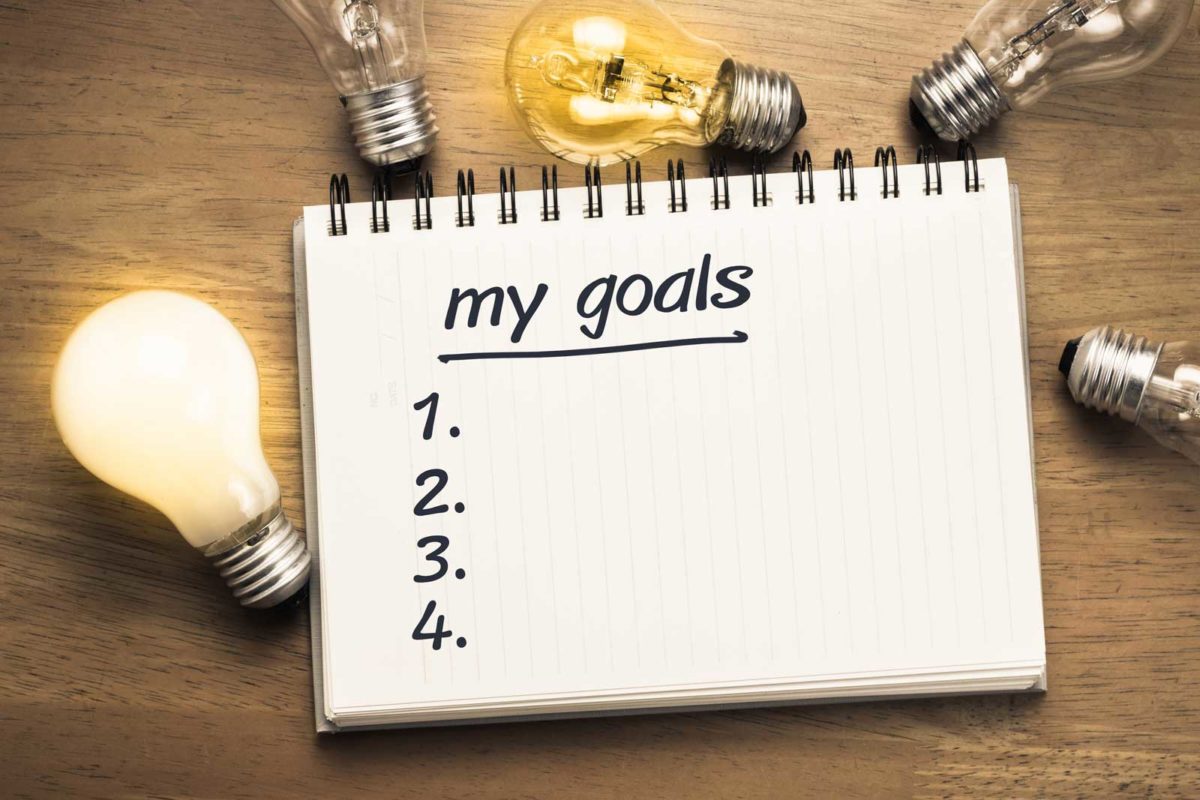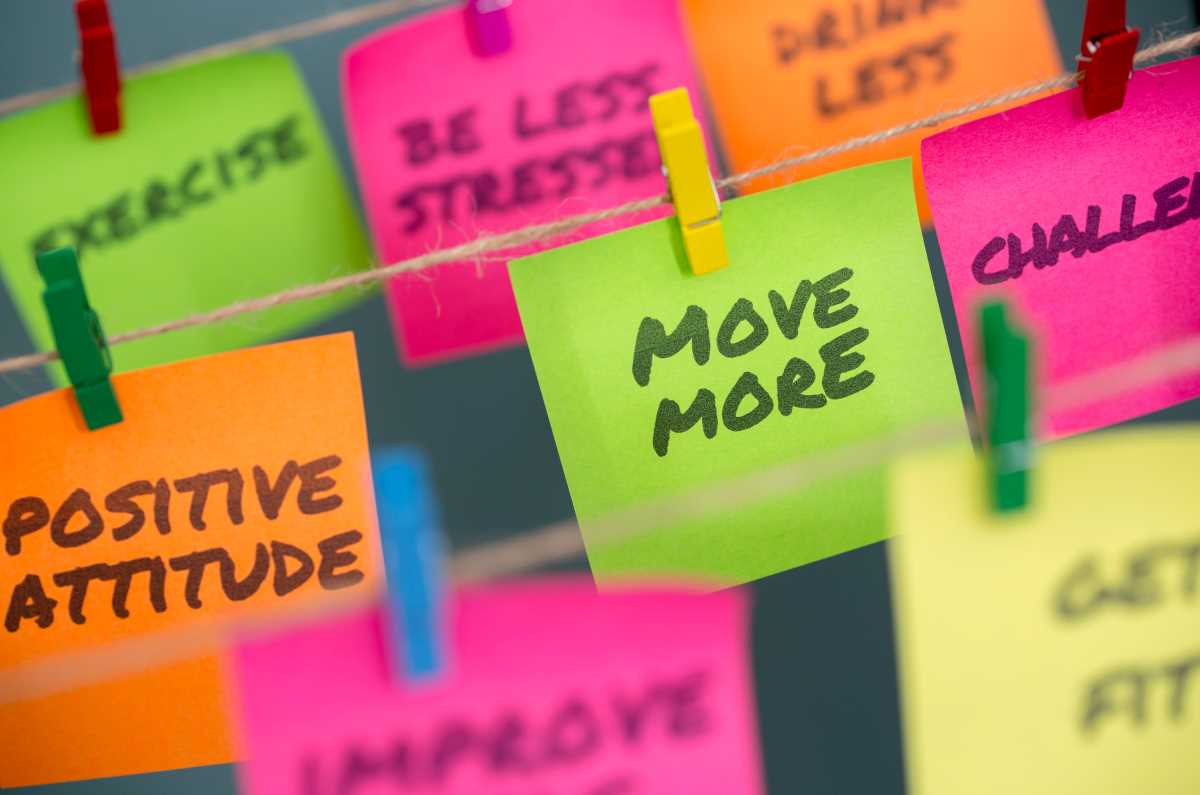January 1, the traditional date many of us resolve to make healthy changes in our lives, has come and gone. Exercise more regularly, add new recipes to the repertoire, meditate in the evenings … sound familiar? And many of us gave it a red hot go.
But as often happens when life gets in the way (or the continuing saga of the pandemic keeps on rolling 🤦), our goals can take a hit.
If you still want to make these changes but haven’t had much success so far, you may want to rethink your approach.
‘Start small’; ‘slow and steady wins the race’; ‘small changes eventually add up to huge results’. These clichés are plastered over Pinterest and motivational boards for a reason. When we start small or break our goals into smaller tasks or actions, they’re less overwhelming and more achievable.
Here are some tips to help you make small but deliberate changes that can have a big impact on your physical and mental health and wellbeing 😊.
First – take the time to reflect on what YOU want to achieve.
Now write it down. Try to be as clear as possible.
Next, consider using the SMART framework. It can help you achieve your goals by helping you clarify your ideas and focus your efforts. SMART stands for:
Specific. What are you trying to do? Losing weight isn’t a specific goal. But committing to a healthy eating plan and regular exercise with the aim to lose 10kg in 8 weeks is.
Measurable. You need to be able to measure your progress so that you know when/if you’ve achieved your goal. With the weight loss example, we’ve specified how we’ll go about losing weight and included a measurable target, i.e. 10kg in 8 weeks.
Achievable. The goal needs to be achievable for you. It should challenge you but still be attainable.
Realistic. You need to be realistic, and your goal needs to be doable – for you and your circumstances. For example, if you’re currently under a lot of stress and not sleeping well, it can be more challenging to lose weight. Aiming to lose weight over a longer period might be a better option. Take the time to think about what’s realistic for you now. By doing this, you’re not setting yourself up to fail.
Timeframe. The goal needs to have an end date that you’re working towards. This gives you the motivation to push yourself further.
Don’t feel that you have to change everything at once. Say you’ve decided you want to improve your health and fitness. You’ve identified that you need to lose weight, exercise more regularly, quit smoking, start meditating, get more sleep, reduce your alcohol intake and drink more water. That’s a lot!
And it’s not like you’re trying to do these things in a vacuum – you also have work/study, family life, social life and – oh yeah – managing a chronic condition or two.
So instead, start with what you’d like to achieve most – e.g. exercising more – and work on that for a week or two. Then include other elements, e.g. talking with your doctor about safe weight loss options. When you feel like you’re making progress there, move on to other things, such as quitting smoking or reducing alcohol.
You’ll still be making a change but in a more achievable, less overwhelming way. And remember that any healthy changes you make will impact other areas you want to improve; e.g. reducing alcohol will aid weight loss and help you sleep better, as will exercising regularly.
Be mindful and focus…on your eating, exercise, time with family, hobbies, etc. We often move through life at breakneck speed and rarely pay attention to the small details. But these things and moments in time add meaning and colour to our lives. So take the time to savour your meals, notice how your body moves and supports you when you exercise, what it feels like to be with your family, or the enjoyment you get from your hobbies. These are small but important things you can practice every day.
Eat when you’re hungry, not when you’re tired, emotional or bored. Working from home and pandemic stress has led many of us to eat things, or at times, we usually wouldn’t. Before you eat something, take time to reflect on whether you’re hungry or not. And if you’re not hungry, what’s making you reach for that food? If you’re hungry, and it’s between meals, do you have healthy snacks close at hand? Will a glass of water help fill you up? Or do you need to look at your meals and whether they provide the nutrients you need to get you through to your next meal without hunger setting in? If you’re not sure how to make healthy changes to your diet, talk with your doctor and/or a dietitian.
Put the devices away for a while and detox from digital. Our preoccupation with our phones, TVs, computers, gaming consoles etc., can get in the way of being present in the moment. And when it comes down to it, how many cat videos, memes, or news stories do we really need to see 😹? Our devices can be a trap, and it’s easy to lose an hour or two before you know it. This could be time spent reading with your kids, cooking a delicious meal or relaxing so you can sleep well. So put them away for a bit and enjoy life offline.
Incorporate the outdoors. Go for a walk in the park or another green space, take deep breaths and inhale the cool, crisp air. Not only will this get you moving, but there are many other health benefits associated with getting outdoors. They include reducing stress, lowering blood pressure, improving your mood and clearing your mind. However, be careful in these wet, wintery months of potentially slippery paths, rug up against the cold and wear appropriate shoes.
You can also use pot plants to bring the outdoors in and enjoy the health benefits. Just be sure to check that they’re not toxic for you, your family or your furry housemates.
Put some physical distance between yourself and your phone. Many of us constantly check our phones to see what the latest beep, blip or alert was for. And most of the time, it wasn’t for anything important. It takes you out of the moment and shifts your focus and concentration. The next thing you know, you’ve zoned out on conversations or started doom-scrolling. So give yourself some space.
Another benefit is that having your phone in a place you need to get up to access it can add quite a bit of incidental exercise to your day. For example, if you use your phone as your morning alarm, moving it away from your immediate bedside area means you’ll have to get up to turn it off. This also means you’ll be less likely to hit snooze countless times 😉.
Make it achievable. Whether you’ve decided to use the SMART framework or not, always make sure the goals you’re setting are achievable; otherwise, it can be disheartening if you don’t reach your target. For example, say you want to drink more water but only manage a glass of water a day at the moment. Trying to immediately go from a glass to the ‘magic’ 2 litres a day will be challenging. So don’t go straight for the big guns; ease your way in and increase your quantity over time.
Take time to make decisions. We’re often quick to say yes when family and friends invite us to dinner or a party, or a colleague asks to collaborate on a project. But try to slow your reaction. A night out or working together on a project might sound great at the time, but take a moment to consider it properly. What’s your schedule like? How are you feeling? Are you able to add another thing to your calendar? Instead of an immediate yes, try saying, “That sounds great; I’ll let you know once I check my schedule”, or “I’ve got a big week ahead, so I’ll have to get back to you”.
Taking control of your time at the outset is better than falling in a heap after over-committing. And those who know you will understand that this is essential to self-care and managing a chronic condition.
Slow and steady wins the race. Do you get to the end of the week and find that you have piles of laundry, too many unread emails and a garden full of weeds? It’s exhausting to even think about! A good practice is to break these jobs into smaller tasks and deal with them methodically during your week. Set aside some time to do these mundane chores each day. It’s up to you how long you spend on this – but having some dedicated time to deal with it means it’s less likely to overwhelm you by the end of the week. Leaving you with more time for the fun stuff! 🕺
Enlist help. There’s lots of help available if you need it. Family, housemates and friends can help you get things done around the home – on a regular or occasional basis. Then there are the professional cleaning/gardening/meal services you can have on standby if you need some backup. You can also talk with your doctor about accessing healthcare services if you need help developing things like a safe exercise program or a healthy eating plan. All you need to do is reach out.
Write it down. How often do you think, “I’ll remember that”, and completely forget it moments later 😣? The name of a TV series someone recommended, a new recipe, the date of your healthcare appointments 😑. It’s so frustrating! But having a foggy brain, persistent pain, sleeplessness, busy lives, and pandemic-brain can make us lose track or forget things. So write it down. On your phone, notepad, fridge … whatever works for you.
Focus on your breathing. Most of us take breathing for granted. It’s just an unconscious thing we do. But your breathing can become shallow if you’re in pain or anxious. However, you can reduce your pain and anxiety by focusing on breathing more deeply. Deep breathing increases feelings of calmness and relaxation and improves your focus and concentration.
Making changes to improve your health and wellbeing is admirable, but it can be challenging. That’s why starting small, building on your progress and asking for help are important. Talk with your family, doctor or the nurses on our Help Line for information and support. Because you can do this … one step at a time.
Contact our free national Help Line
Call our nurses if you have questions about managing your pain, musculoskeletal condition, treatment options, mental health issues, COVID-19, telehealth, or accessing services. They’re available weekdays between 9am-5pm on 1800 263 265; email (helpline@msk.org.au) or via Messenger.
More to explore













